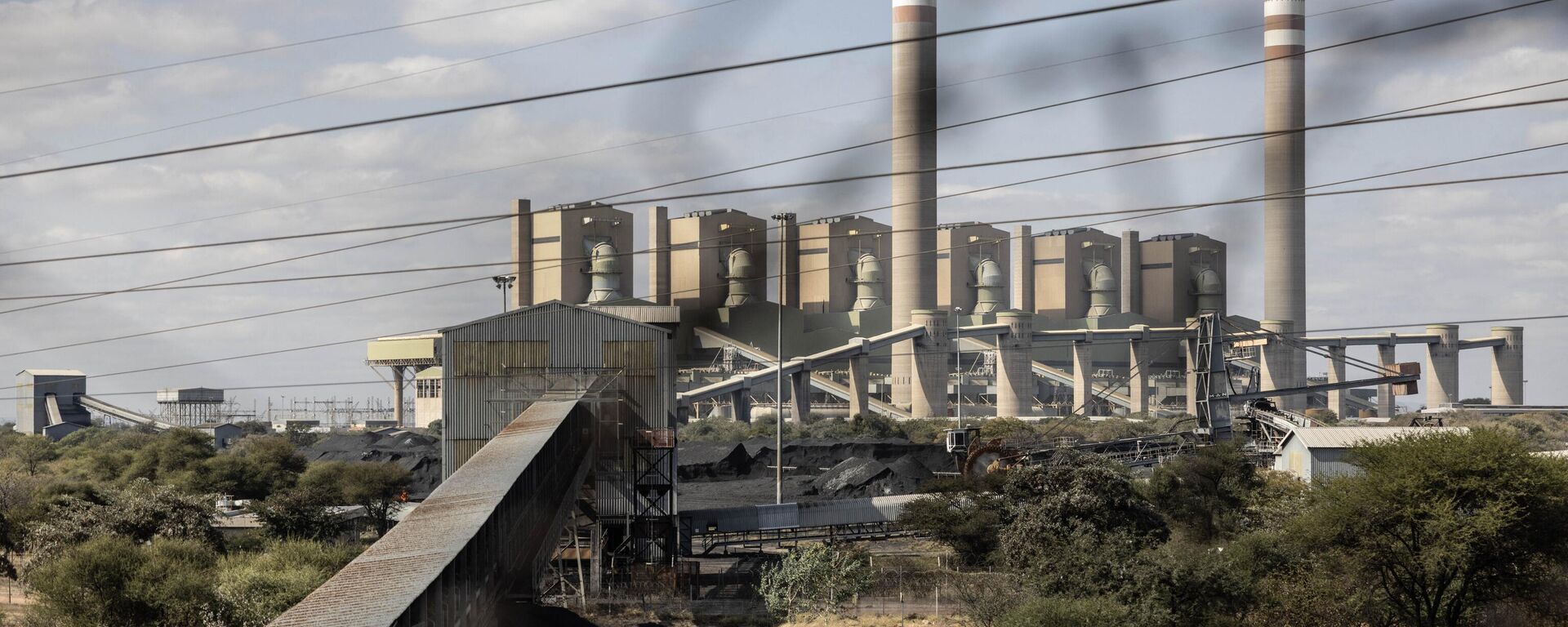https://en.sputniknews.africa/20231211/sa-approves-updated-integrated-resource-plan-for-next-15-years-to-tackle-energy-crisis-1064068176.html
SA Approves Updated Integrated Resource Plan for Next 15 Years to Tackle Energy Crisis
SA Approves Updated Integrated Resource Plan for Next 15 Years to Tackle Energy Crisis
Sputnik Africa
South Africa has been trying to solve the ongoing energy crisis in different ways. Thus, in November, South Africa accelerated plans for 3 gigawatts (GW) of... 11.12.2023, Sputnik Africa
2023-12-11T15:46+0100
2023-12-11T15:46+0100
2023-12-11T17:12+0100
sub-saharan africa
south africa
southern africa
renewable energy
electricity
energy crisis
energy
crisis
https://cdn1.img.sputniknews.africa/img/07e7/0c/0b/1064069582_0:302:3072:2030_1920x0_80_0_0_bee294608710ed1768143ba193357cdc.jpg
An updated Integrated Resource Plan (IRP), which outlines plans for the growth of power supply until 2050, has been approved by South Africa's Cabinet, Electricity Minister Kgosientsho Ramokgopa said in an online briefing on Sunday.The minister outlined two "important things" in the plan: the two time horizons.The first is until 2030, which will facilitate the government to ensure that the country is "able to ameliorate the degree of the energy deficit" that it’s experiencing now.The second time range is from 2030 to 2050: the government will focus on new sources of energy and renewable energy as well as "their linkages to the availability of transmission" infrastructure, the minister said.According to a May report by the country's Presidential Climate Commission, a revision of the 2010–30 IRP should incorporate 50–60 gigawatts of renewable energy by 2030.Besides, in December, the South African government reportedly proposed a plan to shift the economy away from fossil fuels within five years.Moreover, the minister then called on communities and all interested groups to actively participate in finalizing the plan.Furthermore, Ramokgopa assured that the government would resolve the issue of load shedding as it "has got an adverse pick on our ability to deliver [government’s] constitutional obligations." The minister continued, saying that "the ministry of electricity must take all steps [...] to ensure that there shall be sufficient supply of generation of electricity" by no later than January 31, 2024.Lastly, the minister announced that unit 2 of Koeberg Nuclear Power Station — the only nuclear power station on the continent — is going off on Monday. 10:40Ramokgopa recalled that unit 1 came back to work after significant delays after the government "took it out of commission as part of the licensing requirement" to comply with the regulator’s requirement in order to extend service life of the power station by 20 years. Now, unit 2 is taken out for the same purposes. He assured that the government learned from mistakes in relation to with unit 1.The rainbow nation is currently facing an energy crisis that threatens the country's economic stability. The crisis has led to frequent power outages lasting up to several hours, to protect the national grid from complete blackout.
https://en.sputniknews.africa/20231210/what-challenges-lie-ahead-of-south-africas-eskoms-new-ceo-amid-energy-crisis-1064051033.html
south africa
southern africa
Sputnik Africa
feedback@sputniknews.com
+74956456601
MIA „Rossiya Segodnya“
2023
Christina Glazkova
https://cdn1.img.sputniknews.africa/img/07e7/0b/07/1063380906_0:0:673:674_100x100_80_0_0_79628b4d0cd9f29291a57aa13bbf9e7a.jpg
Christina Glazkova
https://cdn1.img.sputniknews.africa/img/07e7/0b/07/1063380906_0:0:673:674_100x100_80_0_0_79628b4d0cd9f29291a57aa13bbf9e7a.jpg
News
en_EN
Sputnik Africa
feedback@sputniknews.com
+74956456601
MIA „Rossiya Segodnya“
Sputnik Africa
feedback@sputniknews.com
+74956456601
MIA „Rossiya Segodnya“
Christina Glazkova
https://cdn1.img.sputniknews.africa/img/07e7/0b/07/1063380906_0:0:673:674_100x100_80_0_0_79628b4d0cd9f29291a57aa13bbf9e7a.jpg
south africa, southern africa, renewable energy , electricity, energy crisis, energy, crisis
south africa, southern africa, renewable energy , electricity, energy crisis, energy, crisis
SA Approves Updated Integrated Resource Plan for Next 15 Years to Tackle Energy Crisis
15:46 11.12.2023 (Updated: 17:12 11.12.2023) Christina Glazkova
Writer / Editor
South Africa has been trying to solve the ongoing energy crisis in different ways. Thus, in November, South Africa accelerated plans for 3 gigawatts (GW) of gas-fired power generation to address the crisis. Now, the government has approved some long-term measures to tackle power outages.
An updated Integrated Resource Plan (IRP), which outlines plans for the growth of power supply until 2050, has been approved by South Africa's Cabinet, Electricity Minister Kgosientsho Ramokgopa said in an
online briefing on Sunday.
The minister outlined two "important things" in the plan: the two time horizons.
The first is
until 2030, which will facilitate the government to ensure that the country is "able to ameliorate the degree of the
energy deficit" that it’s experiencing now.
The second time range is from
2030 to 2050: the government will focus on new sources of energy and
renewable energy as well as "their linkages to the availability of transmission" infrastructure, the minister said.
"Issues that have to do with our ability to exploit our renewable energy endowment," Ramokgopa said.
According to a May report by the country's Presidential Climate Commission, a revision of the 2010–30 IRP should incorporate 50–60 gigawatts of renewable energy by 2030.
Besides, in December, the South African government reportedly
proposed a plan to shift the economy away from fossil fuels within five years.
Moreover, the minister then called on communities and all interested groups to actively participate in finalizing the plan.
"So I really do urge the communities, stakeholders and all interest groups to take a keen interest because really [it’s] what determining our energy future so it’s important that you are all able to make those contributions, and you’re able to help in the formulation of IRP 2023 because this will underpin our responses in relation to how we’re going to address the energy situation in the country," he stated.
Furthermore, Ramokgopa assured that the government would resolve the issue of load shedding as it "has got an adverse pick on our ability to deliver [government’s] constitutional obligations." The minister continued, saying that "the ministry of electricity must take all steps [...] to ensure that there shall be sufficient supply of generation of electricity" by no later than January 31, 2024.
Lastly, the minister announced that unit 2 of Koeberg
Nuclear Power Station — the only nuclear power station on the continent — is going off on Monday. 10:40
Ramokgopa recalled that unit 1 came back to work after significant delays after the government "took it out of commission as part of the licensing requirement" to comply with the regulator’s requirement in order to extend service life of the power station by 20 years. Now, unit 2 is taken out for the same purposes. He assured that the government learned from mistakes in relation to with unit 1.
The rainbow nation is currently facing an
energy crisis that threatens the country's economic stability. The crisis has led to frequent power outages lasting up to several hours, to protect the national grid from complete blackout.



